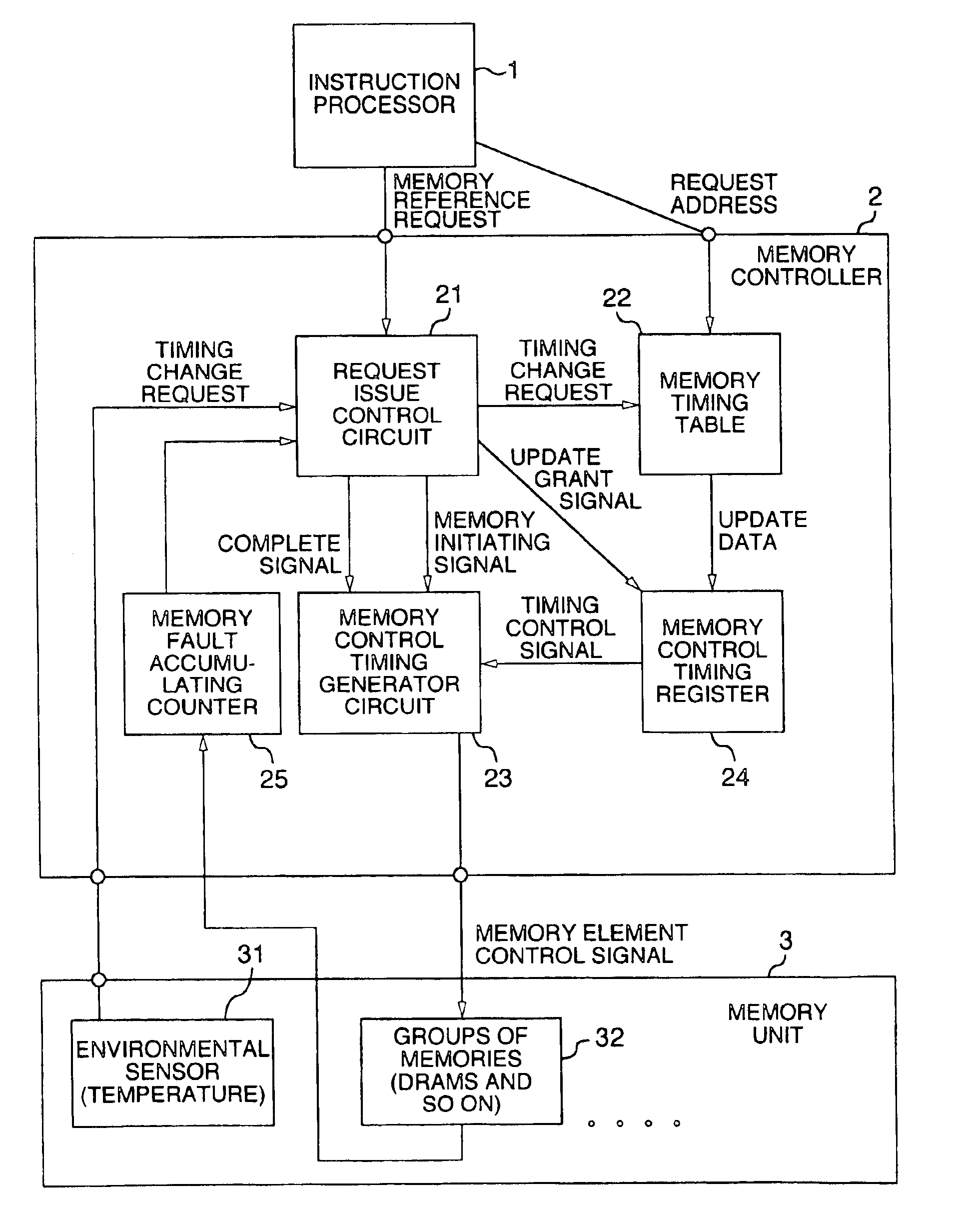Information processing system with memory element performance-dependent memory control
a technology of memory elements and information processing systems, applied in the field of information processing systems, can solve the problems of large amount of memory elements equipped with problems, insufficient timing margins, and information processing systems that fail to exhibit actual performance and capability of elements, and achieve the effect of stably operating memory elements and highest possible performan
- Summary
- Abstract
- Description
- Claims
- Application Information
AI Technical Summary
Benefits of technology
Problems solved by technology
Method used
Image
Examples
Embodiment Construction
An embodiment of the present invention will hereinafter be described in detail with reference to the accompanying drawings.
FIG. 1 illustrates in a block diagram form the configuration of an information processing system according to an embodiment of the present invention. The information processing system illustrated in FIG. 1 comprises an instruction processor 1; a memory controller 2; a memory unit 3; a request issue control circuit 21; a memory timing table 22; a memory control timing generator circuit 23; a memory control timing register 24; a memory fault accumulating counter 25; an environmental sensor 31; and groups of memories 32.
As can be seen in FIG. 1, the information processing system according to the embodiment of the present invention is generally divided into the instruction processor 1 for executing instructions; the memory controller 2 for controlling the memory unit 3; and the memory unit 3. The memory controller 2 comprises the request issue control circuit 21 for...
PUM
 Login to View More
Login to View More Abstract
Description
Claims
Application Information
 Login to View More
Login to View More - R&D
- Intellectual Property
- Life Sciences
- Materials
- Tech Scout
- Unparalleled Data Quality
- Higher Quality Content
- 60% Fewer Hallucinations
Browse by: Latest US Patents, China's latest patents, Technical Efficacy Thesaurus, Application Domain, Technology Topic, Popular Technical Reports.
© 2025 PatSnap. All rights reserved.Legal|Privacy policy|Modern Slavery Act Transparency Statement|Sitemap|About US| Contact US: help@patsnap.com



